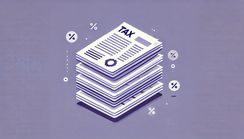Form 8881: tax credit for small employer pension plan startup costs

A retirement plan is one of the most valued employee benefits. The Employee Benefit Research Institute (EBRI) found that having access to a retirement savings plan through an employer greatly contributes to workers' feelings of financial security.
Still, 43% of private-sector small businesses do not provide retirement benefit plans to their employees. High startup costs are one of the main reasons small businesses often shy away from it.
To make retirement benefits more affordable, the Internal Revenue Service (IRS) offers a tax credit specifically for small businesses looking to establish a retirement plan.
This article explores how the startup cost credit works, which businesses qualify for it, and how to claim it with Form 8881 to benefit the company and its employees.
What is startup cost credit?
The startup cost credit for small employer pension plans allows businesses to claim up to $5,000 per year for the first three years when setting up a SEP, SIMPLE IRA, or qualified plan, such as a 401(k).
You can claim costs of setting up and managing your pension plan. These expenses are often significant, particularly for those companies that did not provide retirement plans before. Setup fees alone can reach $3,000, with additional annual administrative costs. Employee education programs can also add $1,000 to $2,500.
This tax credit is calculated on a dollar-for-dollar basis, directly reducing the taxes owed by the business.
How to qualify for the startup cost tax credit
The IRS established three main requirements for small businesses to qualify for the startup cost credit:
1. Employee threshold: Your business must have no more than 100 employees, each earning at least $5,000 in the year prior to starting the retirement plan. Employees making less than $5,000 are not included in the count.
2. New plan requirement: You must not have provided a retirement plan to substantially the same group of employees in the past three years.
3. Non-highly compensated employee (NHCE): There must be at least one NHCE participating in the plan.
What types of pension plans qualify for the tax credit?
Most common retirement plans for small businesses qualify for the tax credit. These include:
- 401(k) plans (both standard and safe harbor versions)
- 403(b) plans for nonprofit and educational organizations
- SEP IRAs and SIMPLE IRAs
- traditional pension plans
The SECURE Act 2.0 also allows businesses that join an existing Multiple Employer Plan (MEP) to receive the credit based on their entry date, making participating in established retirement programs easier.
How to calculate the credit amount
The credit amount varies based on the number of employees and the costs associated with starting the plan.
Here's a breakdown of how the credit is structured:
- Businesses with 1–50 employees are eligible for a credit covering 100% of startup costs, up to the greater of $500, or $250 multiplied by the number of NHCEs eligible to participate (capped at $5,000).
- Businesses with 51–100 employees are eligible for 50% of startup costs, calculated similarly, up to the same limits.
For example, a tech startup with 30 employees incurs $3,500 in setup and administrative costs. This startup can claim the entire $3,500 for the tax year, reducing its tax bill by that amount.
Another example is a small retail business with 70 employees that incurs $6,000 in setup and administrative costs for its new retirement plan. Since the company has between 51 and 100 employees, it can claim a credit of 50% of these costs ($3,000).
Form 8881: How to claim the startup costs tax credit
Small businesses need to file Form 8881 with their tax return to claim this tax credit.
Here's a brief guide to the Form 8881 sections:
- Part I: Claim the credit for eligible startup costs in establishing or administering the retirement plan.
- Part II: Use this section to claim the auto-enrollment credit if you automatically enroll employees.
- Part III: For businesses employing military spouses, enter details on their participation in the retirement plan.
SECURE Act startup tax credits
In 2019, Congress introduced the SECURE Act to expand retirement savings access, particularly for small businesses. The SECURE Act 2.0 added new incentives like more extensive startup cost credits, auto-enrollment support, and employer match credits.
This article primarily focuses on the startup cost credit, but it's helpful to explore other available tax incentives:
Auto-enrollment credit – an additional $500 annually for the first three years if a company implements automatic enrollment, encouraging higher employee participation.
Employer match credit is a tax credit for contributions made to employee plans. This credit is available for contributions of up to $1,000 per participant in a defined contribution plan, SEP, or SIMPLE IRA, with a phased reduction over five years.
Talk to TFX about maximizing tax savings with retirement plan credits
Startup tax credits can be complex, and expert guidance can help you make the most of available tax incentives.
TFX is a top-rated tax firm for US-based small businesses. We help companies optimize tax benefits, including retirement plan credits. Our team of CPAs and EAs works with you to streamline the tax credit process, provide clear strategies, and ensure you're fully leveraging the tax code to benefit your business.
Partner with professionals for taxes
Sign upDisclaimer: This article is for informational purposes only and does not constitute legal or tax advice. Always consult with a tax professional regarding your specific case.

Ines Zemelman, EA, is the founder and president of TFX, specializing in US corporate, international, and expatriate taxation. With over 30 years of experience, she holds a degree in accounting and an MBA in taxation. See more
Further reading

